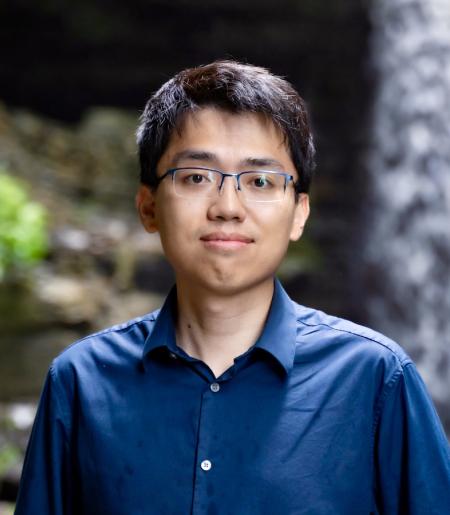Overview
Our research group explores emergent quantum phenomena arising from the collective motion of electrons in quantum materials. We specialize in the study of 2D materials and van der Waals (vdW) heterostructures, which are created by mechanically stacking multiple layers of 2D materials. This approach enables the creation of new material architectures, opening up limitless possibilities for tailoring quantum properties. To investigate these quantum materials, we utilize low-temperature electrical transport measurements and scanning tunneling microscopy (STM). In particular, we have a strong emphasis on innovative applications of STM on 2D materials and devices, allowing us to examine electron behaviors down to the atomic level. We are also passionate about building quantum devices that showcase the fascinating properties of 2D materials and heterostructures.
Research Focus
We are interested in topics include unconventional superconductivity, exciton condensation, frustrated magnetism, strongly correlated electron orders, and fractional topological states. Our current directions include:
Engineer quantum states of matter in vdW heterostructures: We stack 2D materials in new configurations and exploit the interplay between separate atomic layers (such as interlayer Coulomb coupling and moiré patterns) to create novel correlated and topological phases.
Local probe of 2D quantum materials: We conduct STM experiments on vdW heterostructures to uncover hidden quantum properties (e.g. fractional charges and statistics) and decipher enigmatic quantum states of matter (e.g. the nature of unconventional superconductivity). One powerful measurement technique we use is spectroscopic imaging, which allows us to visualize the electron wavefunction at the atomic scale. Moreover, we are developing innovative methods to access other essential information, such as local magnetic and thermodynamic properties, by combining STM with elaborately designed 2D devices.
Devices and applications: We develop mechanical, electronic, and coherent devices (such as exciton Josephson junctions) derived from 2D materials that has potential applications for quantum technologies.
We are seeking graduate students and postdocs with an interest in quantum materials to join our team.
Awards and Honors
- The Lee Osheroff Richardson (LOR) Science Prize, Oxford Instruments, 2023
Professional Experience
- Assistant Professor, Physics, Cornell University, 2023.
- PCCM Postdoctoral Fellow, Princeton University, 2019 -2023.
Publications
- 1. G. Farahi*, C. Chiu*, X. Liu*, Zlatko Papic, K. Watanabe, T. Taniguchi, M. Zaletel, A. Yazdani. "Broken symmetries and excitation spectra of interacting electrons in partially filled Landau levels." Nature Physics (2023)
- 2. X. Liu*, G. Farahi*, C. Chiu*, Zlatko Papic, K. Watanabe, T. Taniguchi, M. Zaletel, A. Yazdani. "Visualizing Broken Symmetry and Topological Defects in a Quantum Hall Ferromagnet." Science 375, 321-326 (2022).
- 3. X. Liu*, J.I.A Li*, K. Watanabe, T. Taniguchi, J. Hone, B. I. Halperin, C. R. Dean & P. Kim. "Crossover between strongly-coupled and weakly-coupled exciton superfluids." Science 375, 205-209 (2022).
- 4. X. Liu*, C. Chiu*, J. Y. Lee, G. Farahi, K. Watanabe, T. Taniguchi, A. Vishwanath, A. Yazdani. "Spectroscopy of a Tunable Moiré System with a Correlated and Topological Flat Band." Nature Communications 12, 2732 (2021).
- 5. X. Liu*, Z. Hao*, E. Khalaf, J. Y. Lee, Y. Ronen, H. Yoo, D. H. Najafabadi, K. Watanabe, T. Taniguchi, A. Vishwanath, P. Kim. "Tunable spin-polarized correlated states in twisted double bilayer graphene." Nature 583, 221-225 (2020).
- 6. X. Liu, Z. Hao, K. Watanabe, T. Taniguchi, B. Halperin, P. Kim. "Interlayer fractional quantum Hall effect in a coupled graphene double-layer." Nature Physics 15, 893–897 (2019).
- 7. X. Liu, K. Watanabe, T. Taniguchi, B. I. Halperin & P. Kim. "Quantum Hall drag of exciton superfluid in graphene." Nature Physics 13, 746-750 (2017).
- 8. X. Liu, L. Wang, K. C. Fong, Y. Gao, P. Maher, K. Watanabe, T. Taniguchi, J. Hone, C. R. Dean & P. Kim. "Frictional magneto-Coulomb drag in graphene double-layer heterostructures." Physical Review Letters, 119, 056802 (2017).
